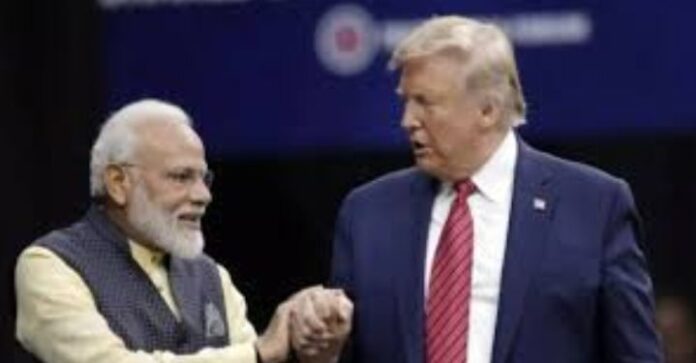On July 30, 2025, U.S. President Donald Trump announced a sweeping new economic measure targeting India: a 25 percent tariff on all Indian imports to the United States, effective August 1. In addition, India will face an unspecified penalty tied to its ongoing procurement of Russian military equipment and energy—moves that have further inflamed geopolitical tensions. This dual action marks a dramatic escalation in India‑U.S. economic relations and sharply complicates bilateral trade negotiations.
Background: From “Liberation Day” to Reconfigured Tariffs
Earlier this year, on April 2, 2025—self-dubbed “Liberation Day”—Trump had introduced a reciprocal tariff policy, proposing a 26 percent tariff on Indian goods. Negotiations slowed, and the tariff was temporarily deferred to allow trade talks to proceed.
Despite multiple negotiation rounds, no final trade agreement emerged. India retained steep barriers on agricultural imports—like wheat, rice, corn, and GM soy—and resisted U.S. demands to ease restrictions. Meanwhile, Washington kept pressing for expanded U.S. access to India’s energy, defense, and industrial procurement markets.
Trump’s Announcement: Key Elements
- 25% Tariff on Indian Imports
Trump asserted that India imposes among the world’s highest tariffs on U.S. products and maintains “strenuous and obnoxious non‑monetary trade barriers.” Thus India will now face a 25 percent tariff on imports into the U.S. beginning August 1. - Penalty for Russian Arms and Energy Purchases
In a pointed move, Trump also declared India would pay a further penalty for purchasing military equipment and energy from Russia, despite mounting international pressure on Moscow over its war in Ukraine. This applies especially as India remains a major buyer of Russian arms and fuel.
Trump framed the measures both as a response to India’s high trade barriers and as a strategic rebuke of its continued economic ties to Russia.
Immediate Economic and Political Fallout
- Impact on India’s Export Sectors
Indian exports to the U.S. totaled approximately $87 billion in the prior year, with a trade deficit of around $45.7 billion in favor of India. Key sectors likely to suffer include garments, pharmaceuticals, jewelry, petrochemicals, auto components, and steel. Estimates suggest that up to 87 percent of exports—valued at around $66 billion—could face disruption. While semiconductors and certain agricultural goods may be spared due to carve‑outs or strategic exemptions, most labor‑intensive and commodity exports remain at risk. Analysts also warn that the new tariff regime could push Indian SMEs into serious financial strain. - Market Reactions and Currency Impact
Trump’s announcement triggered immediate negative sentiment in financial markets. The Indian rupee depreciated against the U.S. dollar, and equity indices saw pressure in pharma, IT, and export‑oriented sectors. Conversely, domestic defense, energy, and infrastructure sectors could benefit as India refocuses inward.
Trade Talks Veer Off Track
The tariff action signals a collapse in momentum for a multi‑sectoral Bilateral Trade Agreement (BTA) between India and the U.S., which had been tentatively expected by fall 2025.
Indian officials have reiterated that no commitments have been made to drastically cut tariffs, especially in sensitive categories like agriculture, dairy, and labor-intensive exports. The Commerce Secretary emphasized that bilateral trade negotiations remain ongoing, but must yield a mutually beneficial outcome.
With the U.S. now opting for punitive tariffs instead of negotiation leverage, constructive dialogue appears severely impaired.
Strategic Implications for India
- Diversification Pressures
India is likely to press further for ties with alternative markets such as the EU, ASEAN, and African economies, as it seeks to offset U.S. losses and avoid over-dependence on its largest export partner. - Energy & Defense Dynamics
Given the penalty concerns tied to Russian arms and energy, India may accelerate efforts to diversify its suppliers—potentially increasing U.S. LNG imports or defense procurement—yet balancing strategic autonomy. During Modi’s February 2025 Washington visit, both countries discussed deepening energy and defense ties as part of a long‑term partnership. - Domestic Resilience & Policy Response
India’s policymakers may lean on Atmanirbhar Bharat initiatives and Production‑Linked Incentives (PLIs) to cushion affected industries. Economic bodies like PHDCCI have already signaled that India’s economy could absorb initial shocks with less than a 0.1% drag on GDP.
What Happens Next?
- India’s WTO Response
India retains rights under WTO protocols to retaliate. It has previously filed notifications reserved for retaliatory tariffs on U.S goods but has not yet activated them. This may resurface as India evaluates legal and diplomatic responses. - Sector‑Specific Dialogue
India and the U.S. had agreed to sector‑specific trade talks earlier in 2025 covering agriculture, digital, defense, and energy. It remains to be seen whether any dialogue can resume under the new punitive framework. - Geopolitical Pressure on Russia
Trump also gave Russia a warning timeline—10 to 12 days—to halt its actions in Ukraine or face “secondary tariffs” on energy buyers, with India among the implied targets.
In Summary
Trump’s announcement on July 30, 2025, of a 25 percent tariff on Indian goods, paired with a penalty tied to military and energy dealings with Russia, represents a sharp escalation in trade and geopolitical policy. The measures derail the ongoing attempts to conclude a Bilateral Trade Agreement, tighten relations through punitive pressure rather than cooperation, and inject uncertainty into India’s export‑driven sectors and diplomatic calculus.
India must now navigate complex choices: whether to retaliate through WTO channels, accelerate diversification of trade and defense suppliers, or make selective concessions in energy/arms procurement. The outcome could redefine the commercial and strategic framework of India–U.S. relations for years to come.

